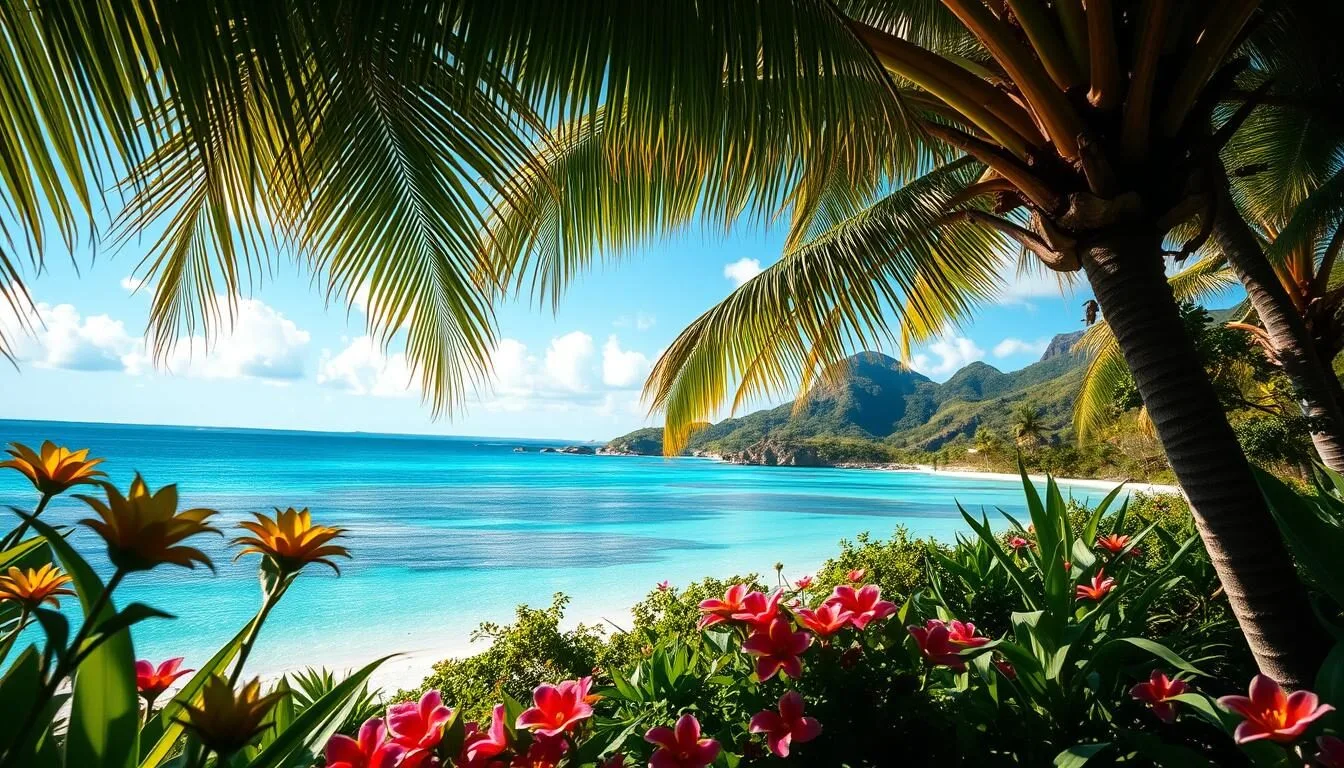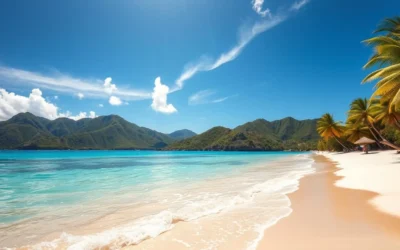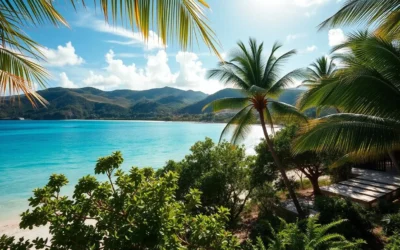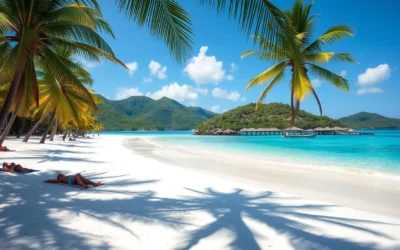✓ Accommodations✓ Flights✓ Rental Cars✓ Tours & Activities
With over 2 million visitors flocking to its pristine beaches and crystal-clear waters annually, the U.S. Virgin Islands is a tropical paradise that offers an unforgettable experience. The key to a perfect Caribbean getaway lies in timing your visit right. The islands’ weather patterns significantly impact your vacation experience, making it crucial to plan your trip during the ideal months.
The period from mid-April to June is considered one of the best times to visit as the dry season ends, and hotel rates drop. You’ll discover why timing is crucial when planning your trip to this island destination. Whether you’re looking for a relaxing getaway or an action-packed adventure, understanding the weather patterns will help you make the most of your trip.
Discovering the Tropical Paradise of the U.S. Virgin Islands
Escape to the U.S. Virgin Islands, where turquoise waters and lush landscapes create a tropical paradise. The islands’ unique charm is characterized by their pristine white-sand beaches and crystal-clear waters, making them an ideal destination for your next getaway.
What Makes the USVI a Premier Caribbean Destination
The U.S. Virgin Islands stand out as a premier Caribbean destination due to their rich cultural heritage and diverse landscapes. You’ll discover the distinct character of each island—St. Thomas, St. John, and St. Croix—each offering its own attractions, from vibrant shopping and nightlife to protected national parkland.
Why Timing Matters for Your Island Getaway
Timing is crucial when planning your visit to the U.S. Virgin Islands. The islands’ weather patterns, tourist crowds, and pricing fluctuate significantly throughout the year. By choosing the right time to visit, you can enhance your vacation experience, whether you’re seeking adventure, relaxation, or cultural immersion.
Understanding the USVI Climate
Understanding the climate of the USVI is crucial for planning a weather-savvy trip to this Caribbean paradise. The islands’ tropical climate is characterized by relatively consistent temperatures throughout the year.
Year-Round Weather Patterns
The USVI experiences a tropical climate with average temperatures ranging from 70°F to 89°F throughout the year. The islands have two primary seasons: a dry season from December to May and a wetter season from June to November.
The Influence of Trade Winds
Trade winds play a significant role in moderating the island climate. During summer, gentle breezes of 5-10 knots are common, while in winter, the winds strengthen to 10-20+ knots, with gusts sometimes exceeding 30 knots.
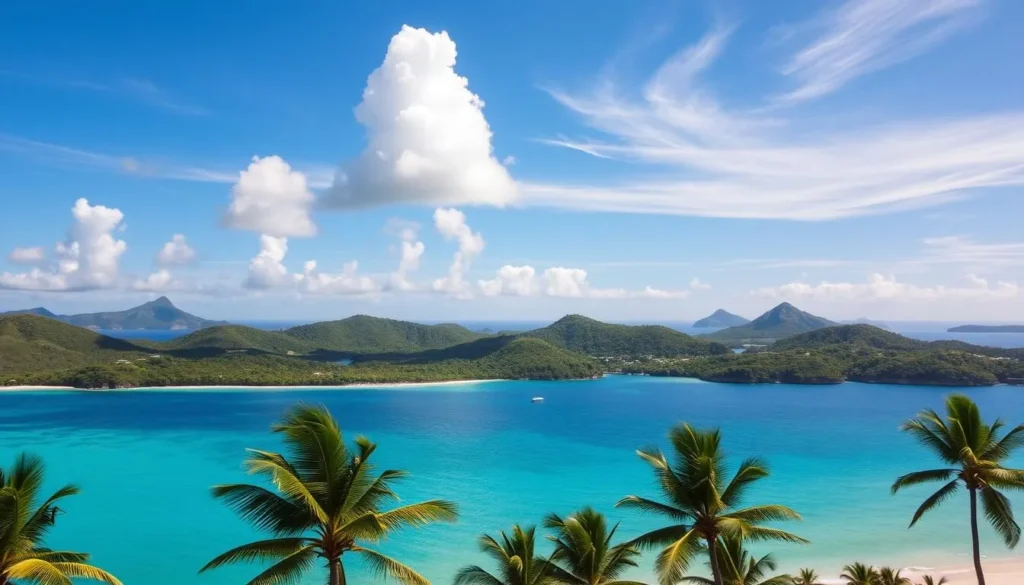
Humidity and Heat Considerations
The phrase “It’s not the heat; it’s the humidity” is particularly relevant in the USVI, where high humidity can make the temperature feel much hotter. July is the most humid month with 76.2% relative humidity, while February is the least humid at 66.1%.
U.S. Virgin Islands, United States: Best Months for a Weather-Savvy Trip
Planning a trip to the U.S. Virgin Islands requires more than just picking a destination; it demands timing your visit perfectly. The islands offer a tropical paradise experience, but the weather plays a significant role in making your trip unforgettable.
Prime Weather Window: December to April
The period from December to April is considered the prime weather window, characterized by sunny skies, low humidity, and minimal rainfall. This makes it ideal for beach activities and outdoor adventures, marking the peak tourist season.
The Sweet Spot: April to June
For travelers seeking a balance, April to June is the “sweet spot,” offering excellent weather with fewer crowds and more reasonable prices as the peak season winds down.
Budget-Friendly Options: May and November
If you’re on a budget, consider visiting in May or November for good weather and significantly lower accommodation rates before or after the high season.
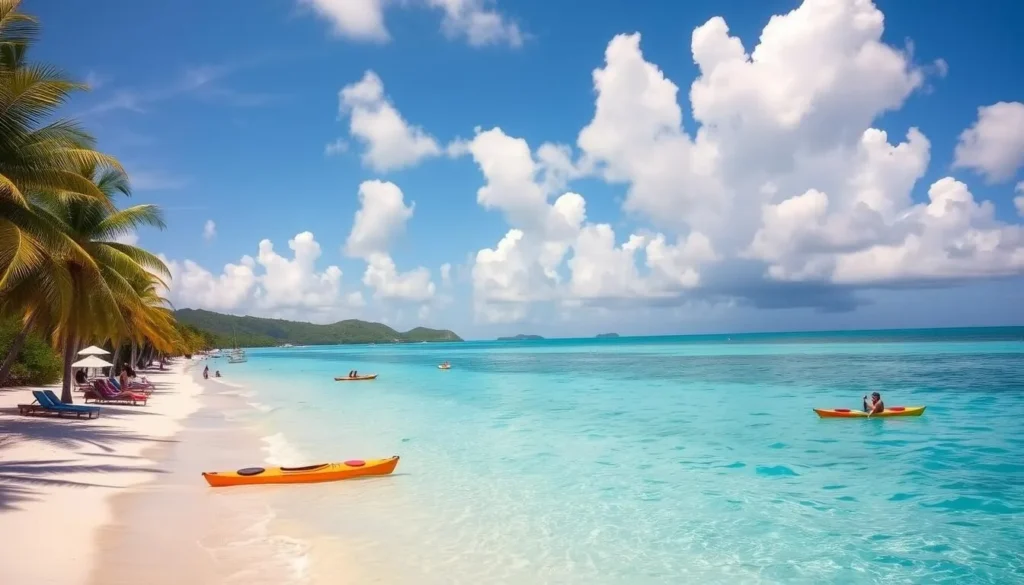
Peak Season (December-April): Perfect Weather, Higher Prices
The peak season in the U.S. Virgin Islands, spanning from December to April, is a period of idyllic weather and increased activity. During this time, you can expect sunny skies, warm temperatures averaging 84°F, and low humidity, creating ideal conditions for your island getaway.
Holiday Festivities and Events
The high season is enhanced by various holiday festivities and special events, including Christmas celebrations and the vibrant St. Thomas Carnival, which sometimes takes place in April. These events add to the vibrant atmosphere, making your visit even more memorable.
What to Expect for Accommodations and Crowds
With the influx of visitors during peak season, you can expect higher prices for accommodations and activities. Popular beaches and attractions tend to be busier, and it’s advisable to book your accommodations and activities well in advance, especially for premium properties.
Tips for Navigating the Busiest Time
To make the most of your visit during peak season, consider strategies like seeking out quieter beaches, making restaurant reservations in advance, and planning activities during less crowded times. Understanding cruise ship schedules can also help you avoid the largest crowds.
| Aspect | Peak Season (Dec-Apr) |
|---|---|
| Weather | Sunny, warm (84°F avg), low humidity |
| Accommodations | Higher prices, book in advance |
| Crowds | Busiest time, popular beaches crowded |
| Events | Holiday festivities, St. Thomas Carnival |
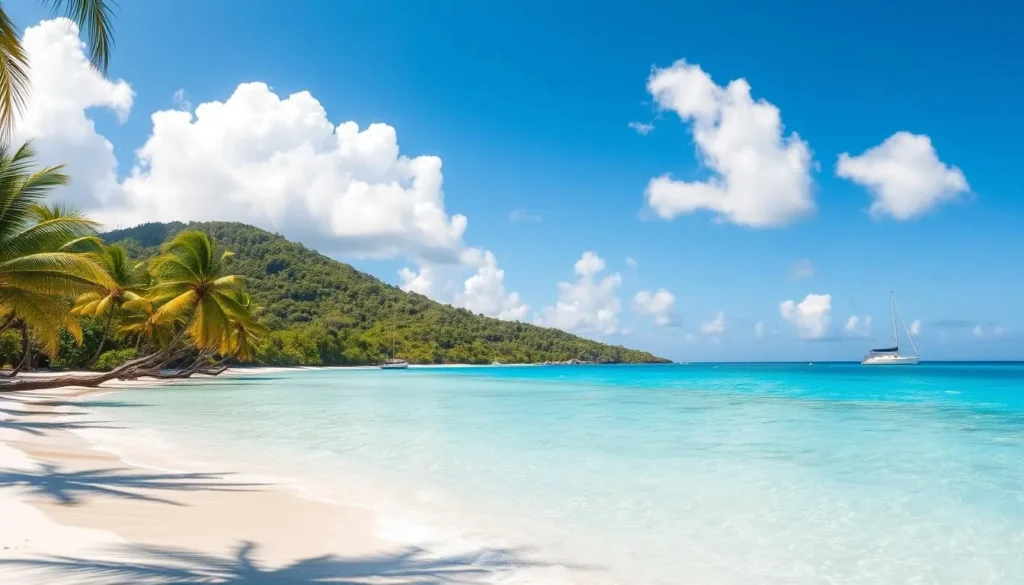
By understanding what to expect during the peak season, you can better plan your trip to the U.S. Virgin Islands and enjoy the perfect blend of weather, activities, and atmosphere.
Shoulder Season (April-June): The Ideal Balance
As you plan your trip to the U.S. Virgin Islands, consider visiting during the shoulder season for an ideal balance of weather and cost. This period, which spans from April to June, offers a unique blend of pleasant weather conditions and fewer crowds, making it an excellent time to visit St. Thomas.
Weather Conditions During Transition Months
The transition months from April to June bring pleasant temperatures, typically ranging from 75°F to 88°F, with gradually increasing humidity. However, the conditions remain comfortable for all activities, making it a great time to enjoy the islands’ attractions.
Benefits of Fewer Crowds and Lower Prices
One of the significant advantages of visiting during the shoulder season is the fewer crowds, allowing you to enjoy more peaceful beaches and a more relaxed atmosphere. Additionally, accommodations are often discounted by 20-30% compared to peak season rates, making luxury options more accessible.
Special Events and Activities
The shoulder season is also a great time to experience the local culture, with events like the St. Thomas Carnival in April and various fishing tournaments and cultural celebrations. You can enjoy these activities while taking advantage of the lower prices and fewer crowds.
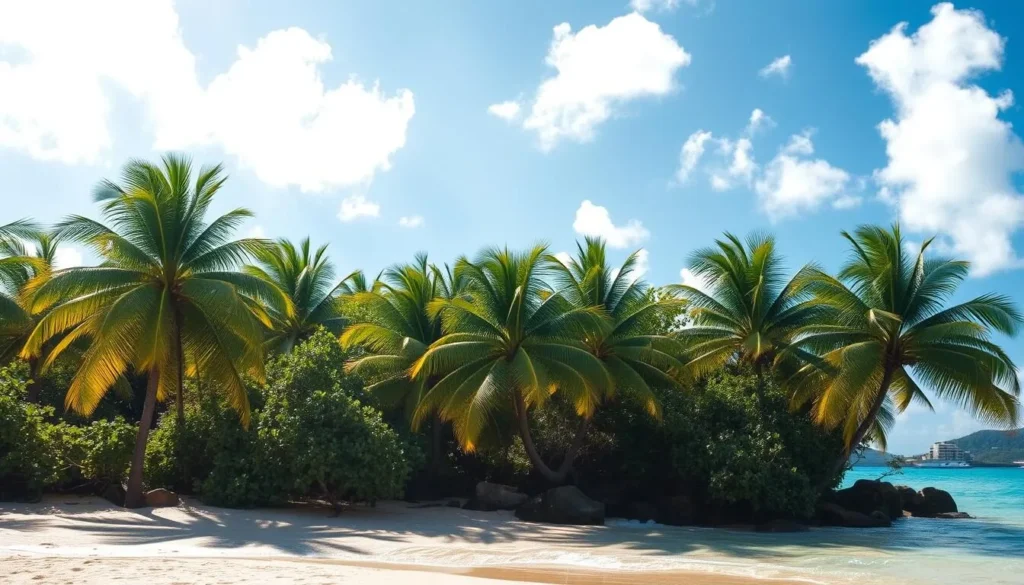
By visiting during the shoulder season, you can enjoy the best of both worlds – good weather and better value. This makes it an ideal time to visit the U.S. Virgin Islands, especially for travelers seeking a more authentic island experience.
Low Season (July-November): Hurricane Considerations
The low season in the U.S. Virgin Islands, which spans from July to November, coincides with the official hurricane season. While this period is characterized by higher humidity and occasional rain showers, it also offers significant benefits for travelers who are flexible and prepared.
Understanding Hurricane Season Risks
Hurricane season in the U.S. Virgin Islands officially runs from June to November, with peak activity typically occurring from August through October. Although the risk of a major storm exists, many visitors travel during this period without experiencing significant weather disruptions.
The Upside: Significant Savings and Tranquility
Traveling during the low season can result in significant savings on hotel rates, which can be discounted by up to 50%. You’ll also encounter less crowded beaches and a more authentic, relaxed island experience. The islands take on a different character during this quieter period, with locals more visible and a slower, more genuine pace of life.
Travel Insurance and Flexible Planning Tips
To mitigate potential risks, consider travel insurance that specifically covers hurricane-related disruptions and cancellations. It’s also wise to book accommodations with liberal cancellation policies and maintain contingency plans for indoor activities during occasional rain showers. Monitoring weather forecasts leading up to and during your trip can help you stay informed about potential storm developments.
| Month | Average Rainfall | Hurricane Risk |
|---|---|---|
| July | 3.5 inches | Moderate |
| August | 4.2 inches | High |
| October | 5.1 inches | High |

St. Thomas: Best Times to Visit
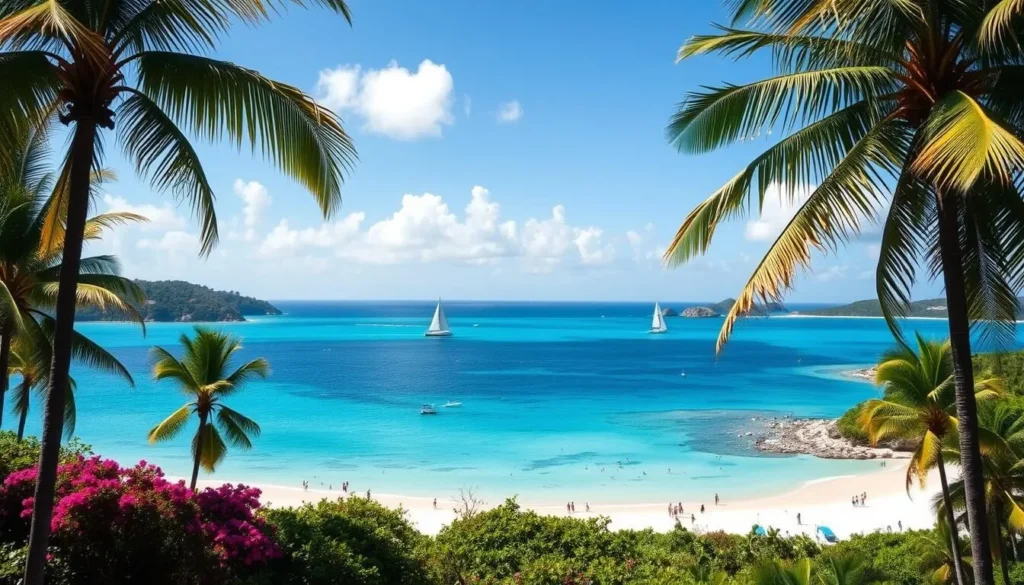
The best time to visit St. Thomas depends on your preferences, whether you’re looking for vibrant cultural festivals or a more relaxed atmosphere. If you’re drawn to lively events, plan your trip around the St. Thomas Carnival, typically held in April or May.
Carnival Festival and Cultural Events
The St. Thomas Carnival is a significant cultural event, transforming the island with parades, music, and food festivals. It’s an ideal time for those seeking an authentic Virgin Islands experience.
Cruise Ship Schedules and Their Impact
Cruise ship schedules play a crucial role in crowd levels. Certain days bring thousands of additional visitors to popular areas. Checking these schedules can help you avoid the busiest days or enjoy the vibrant atmosphere.
Beach and Water Activities Year-Round
St. Thomas offers excellent beach and water activities throughout the year, with water temperatures ranging from 79°F in winter to 83°F in summer. This makes swimming, snorkeling, and diving pleasant in any season.
St. John: Optimal Months for Nature Lovers
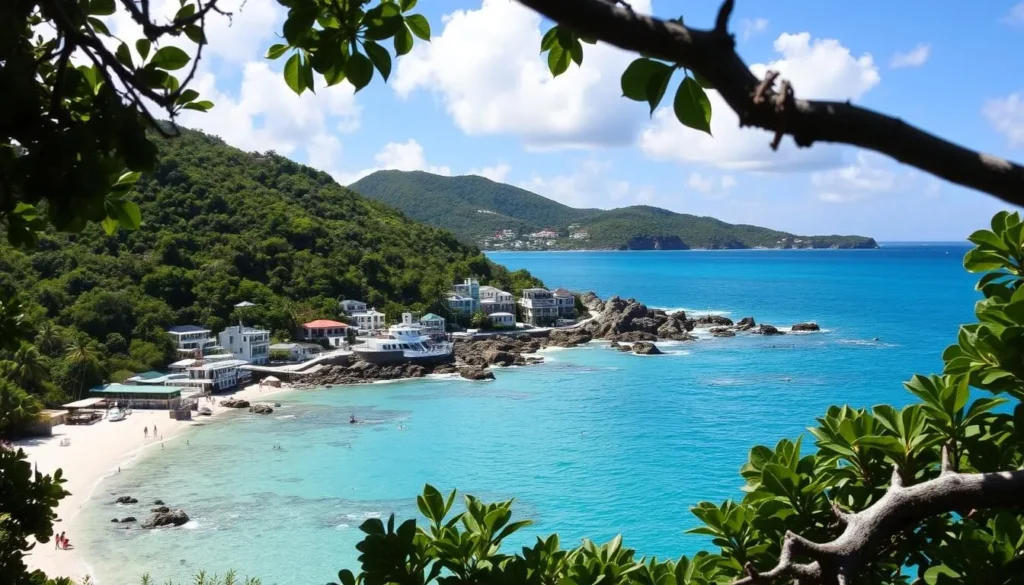
If you’re a nature lover, St. John’s unique landscapes and ecosystems make it an ideal destination. The island offers a distinct experience, with approximately 60% of its land protected as national parkland.
National Park Access Throughout the Year
The Virgin Islands National Park remains accessible throughout the year, but certain months provide optimal conditions for hiking, wildlife viewing, and enjoying pristine beaches. You can explore the island’s natural beauty at any time.
Peak vs. Off-Peak Experience
While December through April offers the most reliable weather for outdoor exploration, the shoulder months of May and November provide excellent value with good conditions and fewer visitors on trails and beaches. This allows for a more serene experience.
Accommodation Considerations
Accommodation planning is crucial for St. John visits, as the limited inventory of hotels and vacation rentals books up months in advance during peak season. Seasonal pricing affects St. John more dramatically than the other islands, with high season rates often double those of low season.
St. Croix: When to Experience the Largest Island
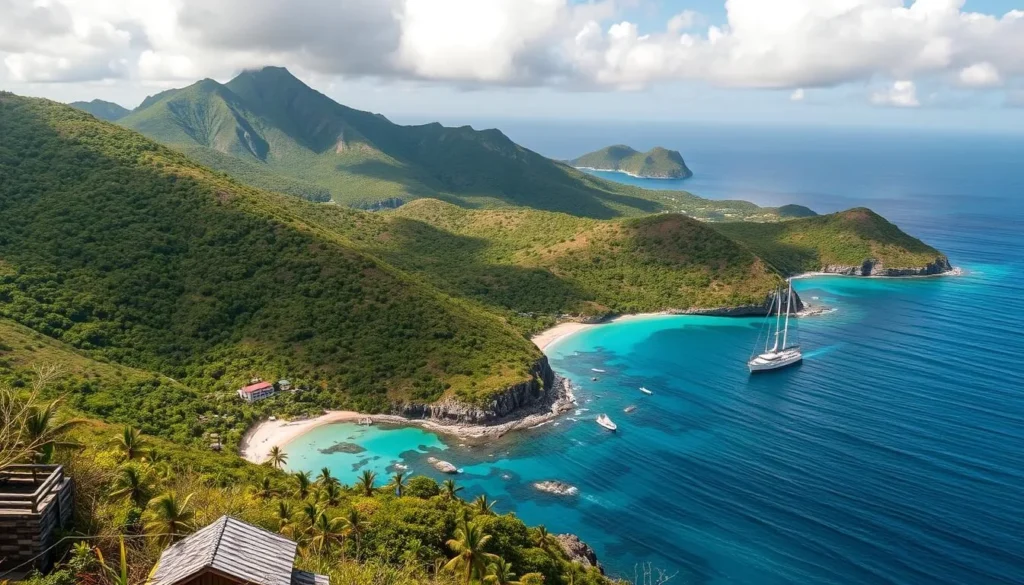
St. Croix beckons with its vibrant culture, historical sites, and breathtaking natural scenery, making it a must-visit destination. As the largest island in the USVI, it offers a distinct experience with its unique blend of Danish colonial history, diverse landscapes, and authentic Caribbean culture.
Unique Weather Patterns
St. Croix’s more southern location gives it slightly different weather patterns than St. Thomas and St. John, with generally drier conditions and less dramatic seasonal variations. The island enjoys a relatively stable climate, making it a great destination year-round.
Cultural Festivals and Local Events
The island is rich in cultural festivals and events, including the famous Christmas Festival in December and January, Jump Up celebrations throughout the year, and the St. Croix Food & Wine Experience in April. These events showcase the island’s vibrant culture and are a great way to experience the local community.
Diving and Snorkeling Conditions by Season
Diving and snorkeling conditions vary by season, with the clearest waters typically found from December through May. This period is perfect for exploring Buck Island Reef National Monument and the famous wall dive at Cane Bay, offering an unforgettable underwater experience.
Month-by-Month Weather Guide
Understanding the weather patterns in the U.S. Virgin Islands is crucial for planning a memorable trip. The islands experience a tropical climate, with temperatures varying throughout the year.
Winter Months (December-February)
The winter months bring pleasant temperatures, ranging from 70-84°F, with low humidity and minimal rainfall, making it an ideal time for outdoor activities.
Spring Months (March-May)
As spring arrives, temperatures gradually warm up, reaching the high 80s by May. March and April are excellent months to visit, with comfortable temperatures and fewer crowds.
Summer Months (June-August)
The summer months bring higher temperatures, often reaching the low 90s. June is a great time to visit, with warm weather and fewer crowds, while July and August are the hottest months.
Fall Months (September-November)
The fall months are characterized by the wettest period, with October being the wettest month. However, September is ideal for swimming, with warm ocean temperatures, and November marks the end of hurricane season.
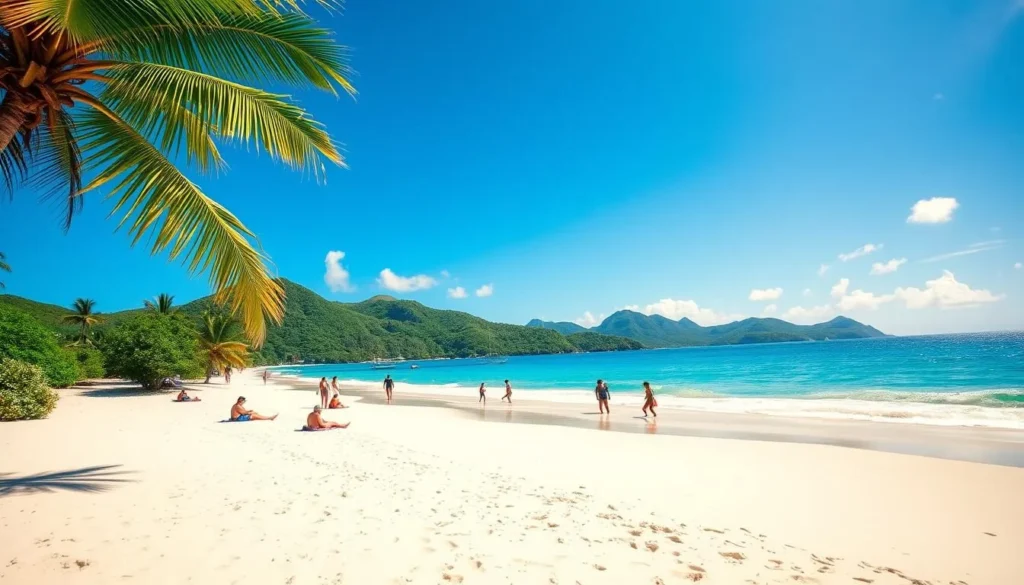
Traveler Types: Finding Your Perfect Time
Your ideal time to visit the U.S. Virgin Islands depends on your travel preferences and priorities. Whether you’re looking for vibrant island life or a secluded getaway, the USVI caters to all preferences, depending on when you visit.
For Beach Enthusiasts and Water Sports Lovers
If you’re a beach enthusiast or enjoy water sports, the best time to visit is from January to April, when the waters are clearest for snorkeling and diving. Surfers might prefer the slightly choppier conditions of the winter months. The calm and clear waters make it an ideal time for various water activities.
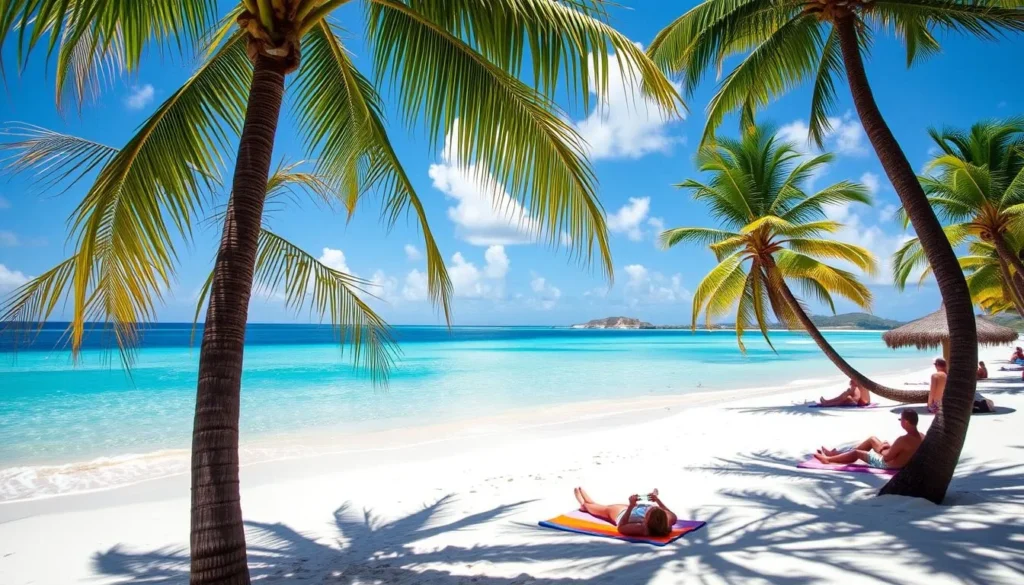
For Budget-Conscious Travelers
Budget-conscious travelers can maximize value by visiting during the shoulder seasons (April-June and November) or taking advantage of the significant discounts available during the low season. Strategies for finding the best deals include booking accommodations well in advance and being flexible with travel dates.
For Families and Crowd-Averse Visitors
Families can consider visiting in early June for good weather and lower rates after most schools are still in session. Crowd-averse visitors can strategically plan their trip to avoid peak tourist season and cruise ship days, creating a more peaceful and authentic island experience.
| Traveler Type | Best Time to Visit | Benefits |
|---|---|---|
| Beach Enthusiasts and Water Sports Lovers | January to April | Clear waters for snorkeling and diving |
| Budget-Conscious Travelers | April-June and November | Significant discounts and value |
| Families and Crowd-Averse Visitors | Early June | Good weather and lower rates |
Conclusion: Planning Your Weather-Perfect USVI Getaway
Planning a trip to the U.S. Virgin Islands requires more than just picking a date; it demands understanding the island’s seasonal nuances. Whether you’re looking for vibrant island life or a secluded getaway, the U.S. Virgin Islands cater to all preferences, depending on when you visit.
The best time to visit depends on your priorities: high season (December-April) for perfect weather, shoulder season (April-June) for a balance, or low season (July-November) for budget-friendliness. Don’t forget to consider travel insurance during hurricane season.
With turquoise waters and golden sands year-round, your USVI getaway is sure to be unforgettable. By understanding the unique characteristics of each island and timing your visit accordingly, you can create a truly memorable Caribbean vacation. Plan wisely, and enjoy your trip!
—
The above is subject to change.
Check back often to TRAVEL.COM for the latest travel tips and deals.
